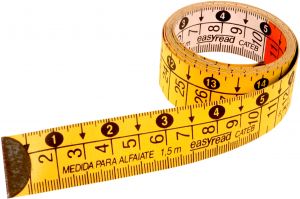Promoting Valid Website Code
Website Validation
![]() We design all our websites using "valid code" and this may be checked by clicking on the image at left.
We design all our websites using "valid code" and this may be checked by clicking on the image at left.
Validity is one of the quality criteria for a Web page, but there are many others. In other words, a valid Web page is not necessarily a good web page, but an invalid Web page has little chance of being a good web page.
Who Run's the Checker?
The checker is run by the Worldwide Web Consortium (W3C) and it exists to promote good web site coding practice. The Markup Validation Service is a free tool that checks Web documents in various formats for conformance to relevant standards. There are also other similar checkers that all perform roughly the same function.
Most Web documents are written using languages defined by technical specifications, which usually include a machine-readable formal grammar (and vocabulary).
Validating Web documents is an important step which can dramatically help their quality, and it can save a lot of time and money. Validation is, however, neither a full quality check, nor is it strictly equivalent to checking for conformance to the specification.
So Why Validate
Well, firstly there is the very practical issue that non-valid pages are relying on error-correction by a browser. This error correction can and does vary radically across different browsers, so that many authors who unwittingly relied on the quirks of Netscape 1.1 suddenly found their pages appeared totally blank in Netscape 2.0. Whilst Internet Explorer initially set out to be bug-compatible with Netscape, it too has moved towards standards compliance in later releases. Other browsers differ further.
The three questions below deal with three different points of view on the issue of Validation.
"My site looks right so what's wrong?"
In practice, different browsers can and do display the same page very differently. This is deliberate, and doesn't imply any kind of browser bug. It is indeed one of the principal strengths of the web, that (for example) a visually impaired user can select very large print or text-to-speech without a publisher having to go to the trouble and expense of preparing a separate edition.
It is perhaps unfortunate that the best-known browsers - Netscape Navigator and MS Internet Explorer on Windows - are visually very similar indeed in their presentation of many documents, differing only in trivial details like margins and spacings. The "same" browser on a Mac display will often look far more different.
"Lots of websites out there don't validate - including household-name companies."
Do remember: household-name companies expect people to visit because of the name and in spite of dreadful websites. Can you afford that luxury?
Even if you can, do you want to risk being on the wrong side of a lawsuit if your site proves inaccessible to - for instance - a disabled person who cannot use a 'conventional' browser? Accessibility is the law in many countries. Whilst validation doesn't guarantee accessibility (there is no substitute for common sense), it should be an important component of exercising "due diligence". It is now just over a year since a court first awarded damages to a blind user against the owners of a website he found inaccessible (Maguire vs SOCOG, August 2000).
"Validation means boring websites, and stifles creativity"
This is simply head-in-the-sand ignorance. Validation is fully compatible with a wide range of dynamic pages, multimedia presentations, scripting and active content, etc. It is part of the difference between doing it right and doing it wrong in a dynamic multimedia presentation, just as much as in a purely textual site.
It is perfectly in order for authors to express their creativity on the Web, though it is of course generally more appropriate to some sites (e.g. recreational ones) than to others (e.g. informational or functional sites like this one). But authors with creative ambitions should bear in mind that in any artistic field, you must start with a thorough understanding of the rules before breaking them. Otherwise you just look foolish.
Before chosing any web designer try running their pages through the W3C validity checker.





